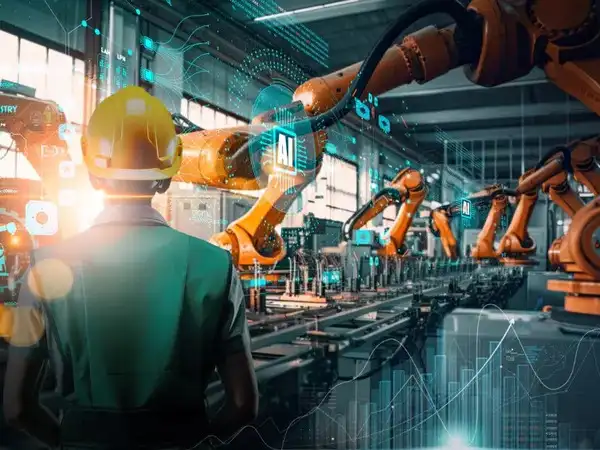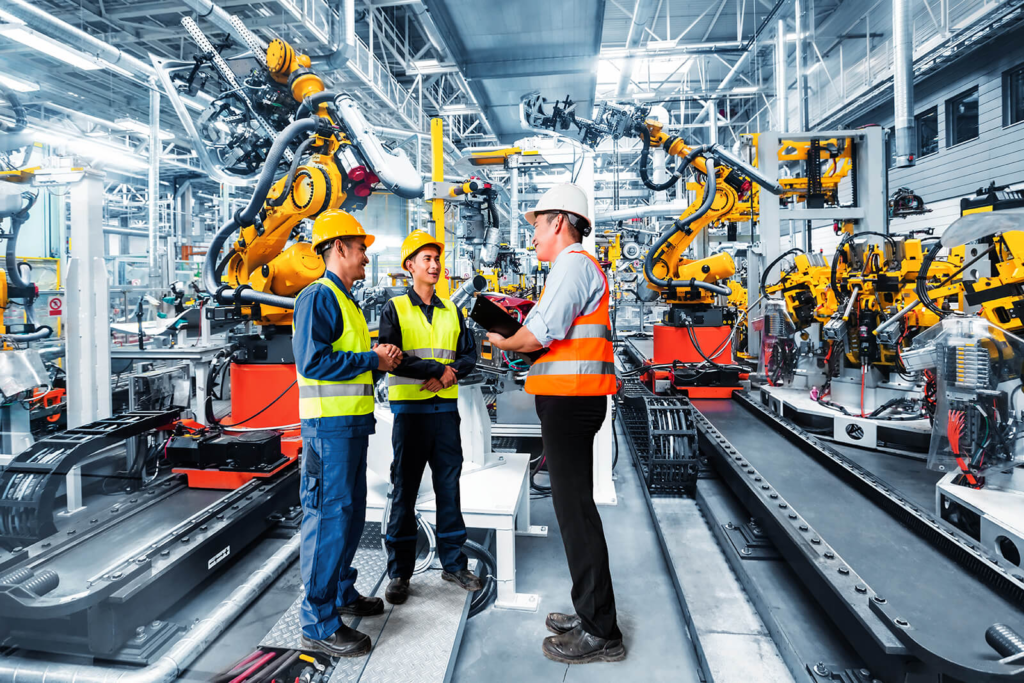Every generation faces its own version of an economic puzzle. Today, the United States stands before what many call a trilemma: the challenge of rebuilding manufacturing, containing inflation, and managing tight immigration policies—all at the same time.
Each of these goals is vital in its own way. Manufacturing provides good jobs and strengthens national security. Inflation control ensures families can afford daily necessities. Immigration policy shapes the workforce and defines the character of the economy. But when pursued together, these goals create tensions that force leaders, businesses, and communities into tough choices.
The trilemma is not just a matter of abstract policy—it touches the lives of workers, families, and entrepreneurs. It shapes how much people pay for groceries, whether factories return to small towns, and how businesses find the talent they need. Understanding it requires a human lens as much as an economic one.
Why Manufacturing Matters Again
For decades, the U.S. watched its manufacturing sector shrink as industries moved abroad in search of lower costs. Entire towns that once thrived on steel, textiles, or machinery were left behind. Families lost stable jobs, and communities lost the anchor of economic identity.
Now, manufacturing is making a comeback as a national priority. Leaders see it as a way to secure supply chains, reduce dependence on foreign powers, and provide well-paying jobs to working- and middle-class Americans. From semiconductors to clean energy technology, the push to “make it in America” has returned with urgency.
For workers, the return of manufacturing holds the promise of dignity and stability. A factory job often means more than a paycheck—it means healthcare, retirement savings, and the chance to build a future without leaving one’s hometown. But rebuilding this sector comes with costs and complications, especially in a globalized world.

Inflation: The Silent Enemy of Households
While the dream of rebuilding factories inspires hope, the reality of inflation looms large. Rising prices affect everything—groceries, rent, fuel, healthcare. Even as wages increase, families often feel like they are running in place.
Rebuilding manufacturing often requires large investments, subsidies, and shifts in supply chains, all of which can temporarily raise costs. Tariffs designed to protect domestic industries may make imported goods more expensive. And higher labor costs, though good for workers, often pass through to consumers in the form of higher prices.
For everyday Americans, inflation is not a distant policy term but a daily frustration. Parents cutting back on groceries, young workers delaying homeownership, and retirees seeing savings shrink all experience the silent squeeze. This makes inflation control not just an economic goal but a deeply human one.
Immigration: The Workforce Puzzle
Immigration adds another layer of complexity. The U.S. economy has long depended on immigrant labor for growth. From farms and construction sites to hospitals and tech startups, immigrants fill roles that keep industries moving.
Yet current policies are tightening immigration flows, creating shortages of workers in critical sectors. While some see this as a way to protect domestic jobs, others argue it undermines the very effort to rebuild manufacturing. After all, new factories require skilled and unskilled labor, and without enough workers, production goals may stall.
At the human level, immigration is also about families seeking opportunity, students chasing education, and communities enriched by cultural diversity. Balancing the economic need for workers with political calls for tighter controls is one of the hardest parts of the trilemma.
The Interconnected Challenge
The trilemma feels like trying to solve three puzzles at once, each affecting the others. Reviving manufacturing often means raising wages and protecting industries, which can stoke inflation. Fighting inflation sometimes calls for higher interest rates, which can slow investment in new factories. Tight immigration policies reduce labor supply, which can push wages up but also limit the speed of industrial revival.
These connections mean there is no simple solution. Every choice comes with trade-offs, and the challenge is finding a path that balances them without letting one priority collapse under the weight of the others.
Reimagining Manufacturing for the Future
One way the U.S. is tackling the trilemma is by rethinking what manufacturing looks like. Instead of returning to the smokestacks of the past, new industries focus on advanced technology, automation, and clean energy.
Factories producing semiconductors, electric vehicle batteries, or wind turbines represent a new vision—one that aligns with global shifts toward innovation and sustainability. While this type of manufacturing often requires fewer workers due to automation, it creates higher-skilled, higher-paying jobs that can fuel long-term growth without sparking runaway inflation.
For communities, this reimagining means new opportunities but also new challenges. Training workers for modern industries requires investment in education, apprenticeships, and partnerships between businesses and schools. The future of manufacturing will not look like the past—but it can still be a powerful engine of prosperity.
Tackling Inflation Without Crushing Growth
Containing inflation while pursuing industrial revival is a delicate balance. Policymakers use tools like interest rates, fiscal spending, and trade policies, but these tools must be applied with precision.
One key approach is investing in productivity. When workers and factories produce more efficiently, costs fall, and inflationary pressure eases. For example, modern technology in manufacturing can reduce waste, increase output, and keep prices stable even as wages rise.
Another approach is strengthening supply chains to avoid the shortages that drive prices up. By producing critical goods at home, the U.S. can avoid global disruptions that leave shelves empty and prices soaring.
For families, success in this area would mean not having to choose between paying the rent and buying groceries. It would mean confidence that wages can stretch further, even as the economy invests in renewal.
Smarter Immigration Policy
Immigration, often framed in extremes, needs a balanced approach to fit into the trilemma. Instead of closing doors entirely or leaving them wide open, smarter immigration policy would focus on aligning workforce needs with national priorities.
Targeted programs for industries facing labor shortages could ensure factories and farms have the workers they need. At the same time, pathways for high-skilled immigrants in technology and engineering can fuel innovation in advanced manufacturing.
For immigrant families, such policies would mean dignity, security, and the chance to contribute fully to society. For American workers, they would mean industries that grow without cutting corners on fair wages. For the economy, they would mean avoiding bottlenecks that slow progress.
The Role of Communities
Beyond government policies, local communities are playing a central role in addressing the trilemma. Cities and towns are working to attract new factories, often competing with incentives and infrastructure investments. Community colleges and training centers are preparing workers for the skills of tomorrow.
These local efforts bring the trilemma down to a personal scale. A laid-off worker retraining for a new job, a family moving back to a town after a factory opens, or a small business thriving from new local spending—these stories reveal the human heartbeat behind economic strategy.

Global Competition and Cooperation
The U.S. trilemma does not exist in isolation. Global competition with countries like China, which has heavily invested in manufacturing, adds urgency. Supply chains stretch across borders, and global inflation affects American households.
At the same time, cooperation with allies can ease the challenge. Partnerships to share resources, align standards, and build joint supply chains make it easier to balance domestic priorities. In a connected world, solving the trilemma requires looking outward as much as inward.
Hope in Innovation and Adaptation
The story of the trilemma is not only about constraints but also about possibilities. History shows that Americans have faced complex economic challenges before and found ways to adapt. Innovation, resilience, and collaboration are part of the national character.
From the industrial revolution to the digital age, the U.S. has repeatedly reinvented itself. The trilemma, for all its difficulties, may become another moment of reinvention—where manufacturing is reborn, inflation is tamed, and immigration is reshaped for a stronger future.
Looking Ahead: A Shared Journey
The economic trilemma is not a puzzle for policymakers alone. It is a shared journey for workers, families, businesses, and communities. It affects the groceries in the cart, the job offer on the table, the town that hopes to see its factory lights turn back on.
Rebuilding manufacturing, containing inflation, and navigating immigration are not separate battles but parts of the same larger struggle to build an economy that is fair, stable, and forward-looking.
The path will require compromise, patience, and creativity. But if Americans can approach the trilemma with unity and purpose, the result may be not just survival but renewal.
This is not the end of the American economic story—it is the beginning of a new chapter, one that promises resilience, growth, and opportunity for generations to come.
Do Follow USA Glory On Instagram
Read Next – Why the 50501 Movement Is Redefining American Democracy






